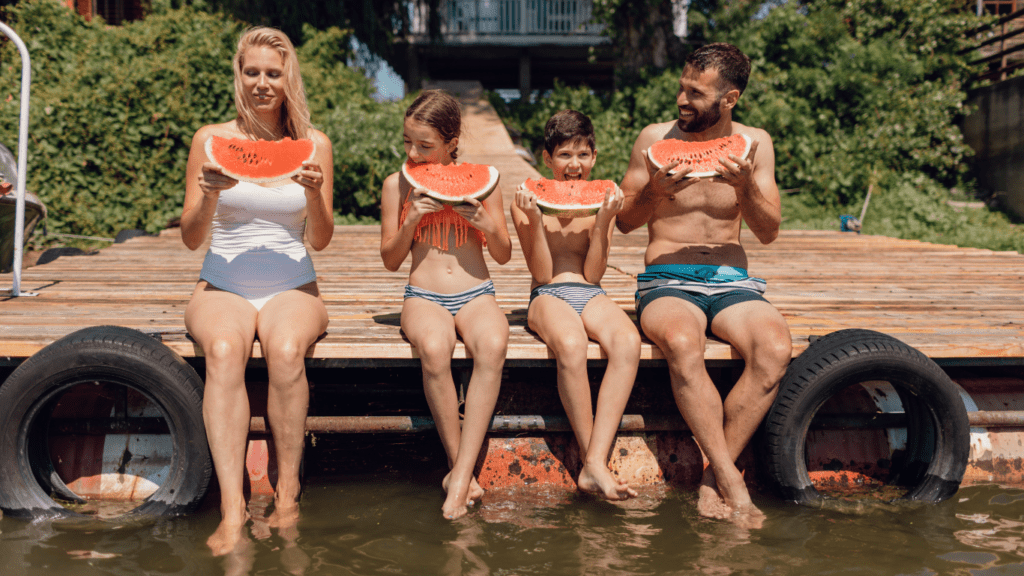There’s something magical about spending time outdoors with family. The fresh air, the open skies, and the endless possibilities for exploration make nature the perfect playground for kids. I’ve always believed that some of the best memories are made when we step away from screens and dive into the wonders of the natural world.
Benefits Of Outdoor Family Fun
- Spending time outdoors supports physical health. Activities like hiking, biking, and running strengthen muscles, improve cardiovascular health, and enhance coordination. Kids, in particular, build endurance through active play in natural environments.
- Mental well-being improves with outdoor family time. Exposure to nature reduces stress, lowers anxiety, and boosts mood. Shared experiences outdoors create emotional connections, fostering stronger family bonds.
- Outdoor adventures promote learning and curiosity. Activities like birdwatching, identifying plants, or exploring trails engage kids’ critical thinking and expand their knowledge of ecosystems.
- Problem-solving skills develop through outdoor play. Tasks such as navigating trails, building forts, or organizing games challenge children to think creatively and constructively in real-world scenarios.
- Social interactions thrive during outdoor family fun. Kids learn teamwork through cooperative activities like scavenger hunts or group sports, improving communication and collaboration. Families share laughs and accomplishments, strengthening relationships.
Best Nature Adventures For Kids
Outdoor adventures provide kids with excitement, discovery, and opportunities to engage with the natural world. These activities combine fun with family bonding and promote valuable learning experiences.
Hiking Trails Perfect For Families
Easy and scenic trails make hiking enjoyable for children and adults. Look for well-marked paths with short distances, such as 1-3 miles, and manageable elevations. For example, many state parks and national parks offer kid-friendly routes with interactive elements like nature scavenger hunts or interpretive signs. Carry snacks and water to keep spirits high.
Exploring Local Parks And Nature Reserves
Parks and nature reserves close to home are great for day trips. Many have designated play areas, picnic spots, and safe trails that balance exploration and convenience. Check for programs like guided nature walks or junior ranger activities, which introduce kids to local ecosystems and conservation.
Wildlife Watching And Bird Spotting
Kids enjoy observing animals in their natural habitats. Visit wildlife sanctuaries, wetlands, or forests where birds, deer, and other wildlife are active. Bring binoculars and a guidebook to identify species. Encourage children to listen for unique sounds or spot animals camouflaged in their surroundings. Many locations also have observation platforms or hides for safe viewing.
Tips For Planning A Safe And Fun Adventure

Careful planning ensures a safe, enjoyable outdoor adventure for the whole family. Prioritizing kid-friendly options and essentials creates a stress-free experience.
Choosing Kid-Friendly Destinations
I select destinations with safety, accessibility, and entertainment in mind. Trails or parks with clear signage, manageable terrain, and amenities like restrooms provide added convenience. Locations with interactive or educational features, such as nature centers or wildlife observation spots, keep kids engaged. For younger children, I consider spots with shaded areas and shorter walking distances.
Packing Essentials For A Day In Nature
I pack lightweight, multipurpose gear to minimize bulk. Essentials include:
- water bottles
- healthy snacks
- sturdy footwear
- sunscreen
I also bring weather-appropriate clothing like raincoats or hats to avoid discomfort. Items such as first-aid kits, insect repellent, and compact binoculars make the day both safe and enjoyable. A trash bag is useful for cleaning up, ensuring minimal environmental impact.
Safety Guidelines To Follow
I establish safety rules before heading out. Staying on marked trails, observing wildlife from a distance, and keeping children within sight prevents accidents. I save emergency contacts in my phone and carry a map of the area to remain prepared. If allergies or medical conditions are relevant, I ensure necessary medications are on hand. Teaching kids how to identify potential hazards, like poisonous plants, helps them stay cautious while exploring.
Creative Ways To Make Nature Adventures More Exciting
Incorporating interactive and engaging activities can elevate the joy of spending time outdoors. Using creativity transforms ordinary outings into memorable adventures.
Scavenger Hunts And Nature Games
I use scavenger hunts to keep kids entertained and curious about their surroundings. Create a list of items to find, such as pinecones, specific leaves, animal tracks, or colorful flowers, tailoring it to the local environment. Teams or individual challenges add an element of competition. For example, awarding small prizes for finding the most items encourages enthusiastic participation.
Nature games like “I Spy” with plants or animals and “Camouflage,” where kids blend into surroundings, promote observation skills. Building fairy houses using twigs and stones or crafting nature-based art fosters creativity while encouraging hands-on interaction.
Camping And Stargazing Experiences
Camping introduces kids to the joy of nights spent under the stars. Set up a family campfire, and engage everyone in telling stories or roasting marshmallows. I find that including simple tasks like pitching a tent or gathering kindling gives children a sense of accomplishment.
Stargazing can make an outdoor adventure magical. Bring a star chart or smartphone app to identify constellations and teach kids basic astronomy. If meteors or planets are visible, the experience becomes even more exciting. Encourage them to create their stories based on what they see in the night sky.





